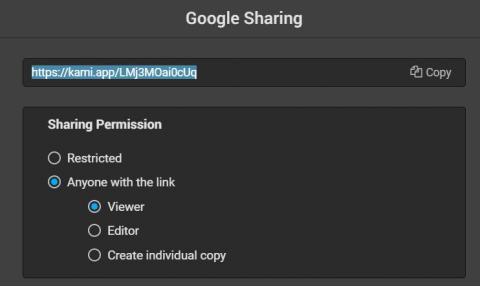Last month I made a thing. Well, actually I adapted a thing…or rather, modified?… enhanced?…personalized?
I started exploring Kami in August 2020. My district’s IT department purchased an Educator License and promoted it as a useful tool for UDL and differentiation. Frankly though, I forgot about Kami in the avalanche of our school openings: once for remote-learning, and another in November for hybrid-hyflex-whatever-we-call-it.
In January 2021, I rediscovered Kami as a useful way to share news articles with students. There was a lot happening in the world, as you might remember. I wanted to spend our limited class time exploring today’s news together, but many articles are challenging for 8th graders to comprehend. Kami’s text-to-speech feature let us read / hear a paragraph together (.8x speed is the best: not too fast, not too drunk), while I shared my screen. During the read-aloud I would highlight key words, phrases, sentences. Occasionally I also added text boxes for section headings, or draw simple shapes to indicate key paragraphs. You can save a Kami and share it with a view-only link, so students who were absent could still access the article.

In March, I built on that experience to use Kami for iCivics materials.
The “Sources of Law” document contained all the basics I needed to start a unit on the legislation process, with terms like statute, lawsuit, criminal / civil law, etc. These are challenging concepts, and unfortunately the reading level (and the rather small font) appeared daunting for many of my 8th graders. Perhaps in “normal times,” I could walk around the classroom to give encouragement and help students with unfamiliar words. But let’s be real: that game of Whack-A-Mole can get exhausting real fast, as you feel pulled in a dozen different directions. At one point, I considered writing my own version of “Sources of Law” like those YA versions of popular nonfiction books.
Instead, I tried applying my experience from January…and it worked!
First I identified the most important elements for students to absorb (regulations, yes! military justice, not so much) and developed their task to show understanding. I trimmed out the activity pages (more on that later) by printing the download to a new PDF with only pages 1-4, and then uploading that into Kami.
Here’s the really cool part: I used the Audio Comment feature to actually add my voice to the iCivics document. Click near the word, phrase, or sentence you need to explain. Then just talk to your students, and hit the stop button to end recording. Done! My recordings were usually 15-30 seconds long. I also used the Markup feature to highlight some key areas.
My comments pointed out connections to other parts of the reading, or defined unfamiliar words that weren’t explained in the document, or otherwise emphasized statements in “Sources of Law”.
PRO TIP: When you share the link, make sure you select “Viewer” not “Editor”…or else your darling students can add their own commentary, which you might not appreciate.
When students started working on this assignment (some remotely, some in the classroom), I was braced for impact. Maybe this was a mistake? Perhaps I still aimed too high? But actually I was peppered with few questions about the informational content (more queries like “Where do I find the link?”). When I did get some FAQs, I could add an additional comment / highlight on the Kami which immediately appeared for students!
Right before school on the second day, I recorded a 2-minute video comment at the top of the document. That’s where I described the assignment directions, and explained how to use the blue dots (it was not intuitive to students these are clickable objects).
I know at least 2 students used the text-to-speech feature to help them read the document; I am sure everyone listened to at least some of my comments in the margins. And I can tell you that every student who attempted this task last week completed it with proficiency (although some needed multiple attempts to adequately answer the questions).
I have not yet tried the fill-the-blanks feature of Kami, which could have been useful for the activity pages of “Sources of Law”. Frankly that was just one technology hurdle too many. Instead, I adapted one of the activities into Jamboard as a class opener on the 4th day of the unit. Soon, though, I hope all my students load the Kami extension into their Chrome browser so we can use our Schoology LMS for assigning & receiving classwork in Kami.
Any tool or strategy that improves our teaching life is always welcome, even more so during a pandemic. There are many apps and hacks that I never wish to use again (we’re looking at you, Zoom and “hybrid” teaching!), but I certainly plan to continue applying this integration of Kami features with iCivics resources. That is the kind of effective problem-solving we’re always hoping to find!
Written by Andrew Swan
Andrew is an 8th grade Social Studies teacher at Bigelow Middle School in Newton MA, where he has worked for 17 years. He has been a member of the iCivics Educator Network since 2019. He is also a co-moderator of the popular SSChat Network that hosts weekly social studies chats on Twitter with the #sschat hashtag. Follow him at @flipping_A_tchr.
